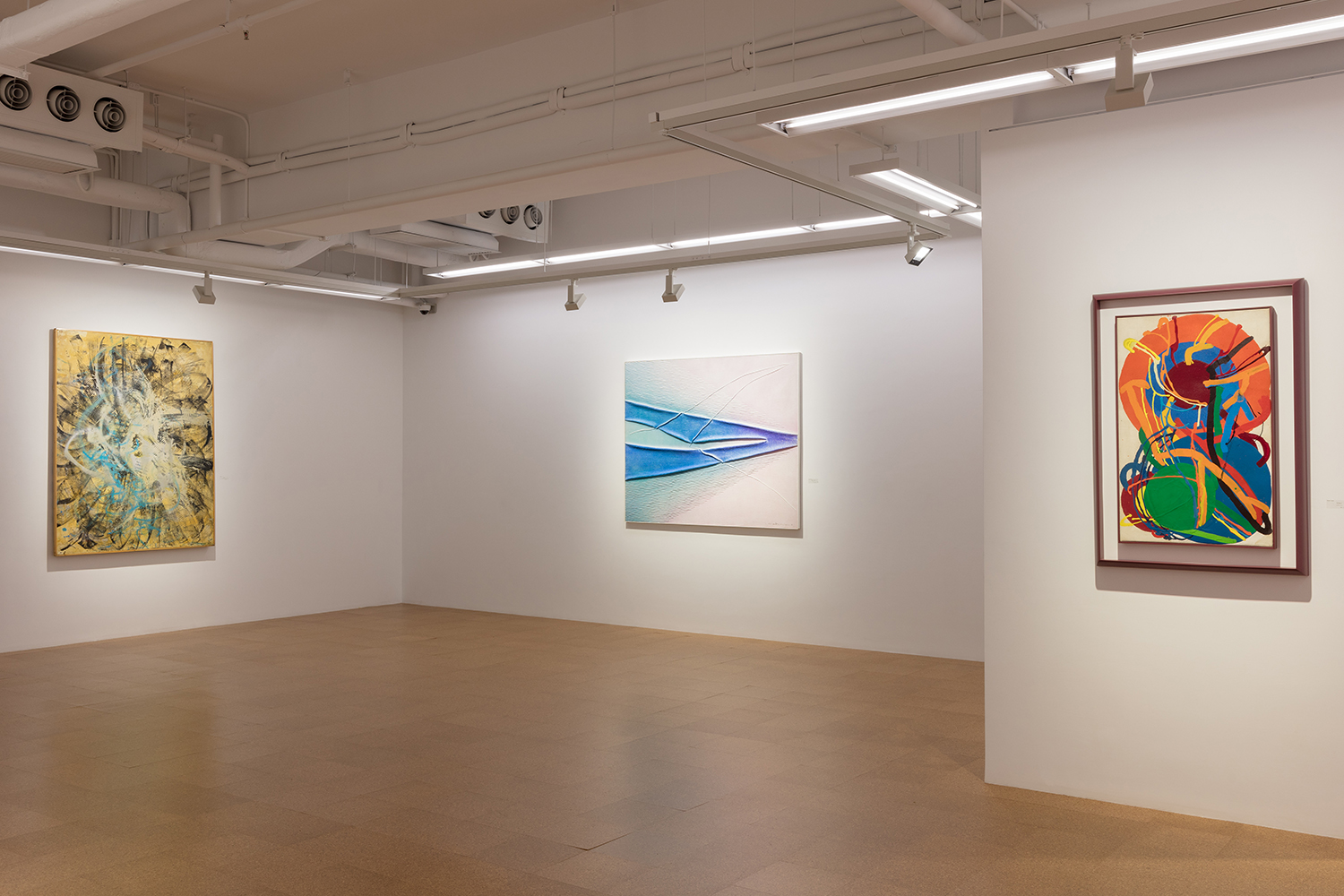Shows
“Gallery Collection” of Whitestone Gallery


Whitestone Gallery Wong Chuk Hang’s summer collection presented a modest-sized exhibition of over 20 works of art, spanning the period from postwar Japan (early 1960s) to recent years. Committed to promoting Japanese avant-garde art movements and artists, the gallery exhibited masterpieces from Yayoi Kusama, Lee Ufan, Masaaki Yamada, Nobuko Watabiki, and young Korean-Japanese artist Asa Go, along with Gutai artists Yasuo Sumi, Tsuyoshi Maekawa, Shuji Mukai and Kazuo Shiraga.
Visitors were greeted with paintings by the four Gutai artists, one of them being Tsuyoshi Maekawa’s Untitled 151070 (1986). A piece of majorelle blue burlap is attached and sewn onto the canvas, while the gradient background, ranging from sky blue to pale rose, highlights the material’s rough, hilly surface. However, the dreamy pastel-colored painting felt out of place in the gallery space, failing to communicate with other works on display, which were tied together by a common theme—rage.

Shuji Mukai’s Work No. 13 (1993) is a monochrome piece that exudes a sense of frenetic, obsessive anger. The glossy, chaotic enamel painting is made up of countless tiny grids; from afar, the artwork resembles a newspaper-patterned snail shell, but upon closer inspection the viewer finds what appears to be ancient symbols scrawled on its surface, either in white or black, in sharp contrast to the background.
Another abstract artwork touching on the topic of aggression was Kazuo Shiraga’s Enjihen (Crimson Rouge) (2004). Crimson, which has become the artist’s signature color, has been applied generously across the large canvas, which is more than two meters across, creating a strong contrast against the white background. The paint appeared to defy the frame’s boundaries, leaping out directly toward the viewer as a testament to the passion underlying the artist’s creative processes: Shiraga had suspended himself from a rope over the canvas, swinging back and forth to spread paint with his feet. Shiraga once wrote in 1955, “I want to paint as though rushing around a battle field.” The crimson smears left by the artist’s feet are a symbol of the blood shed in combat.
Unlike Shiraga, Nobuko Watabiki’s expressions of anger were more subdued. What had I been doing? I (2008) contains a figure with a round head, superimposed onto a cactus-like structure painted in green dots. A recurring character in all her paintings, the expression here is one of nonchalance, with eyes wide open. Although the texture of washi-paper, smothered in layers of cool colors applied with oil pastel, evokes tenderness and warmth, the character’s indifferent stare and the artwork’s title give away the artist’s anger and helplessness. The dry expression reminded viewers of the alter-ego that the self-taught artist has fashioned for herself. The character does not shout or scream; rather, the anger was intensified by a seemingly silent protest. Viewing Watabiki's work was an intimate experience, almost as if one was listening to the artist speak, sharing her confusion and making sense of her life.
Yayoi Kusama’s work, also heavily rooted in her own childhood experiences, feature intricate webs with dot-sized gaps in between. Kusama, having suffered from nervous disorders and hallucinations since a young age, often sees proliferating forms that haunt her surroundings. In Infinity Nets (#1489) (2006), countless red loops rest against a white background, with white dots occupying so little space on the canvas that the painting appears to be a cherry red mosaic. But the more prominent work in the series was Infinity Nets (#2818) (2004), where the artist masterfully uses color to bring depth and layers to the web, creating shallow craters on the smooth painting. A wide range of gold hues—from tan on top of the painting to hazelnut at the bottom—was used, and as you walked back and forth, solid structures not unlike coral reefs came into view.
This excerpt of the gallery’s collection, with its broad selection of artists, introduced viewers to a variety of artwork under the umbrella of Japanese avant-garde, from Gutai art and Mono-ha art to Yayoi Kusama’s hallucinations and the inner self of emerging artists. The absence of a curator was acutely felt, and connections between paintings were relatively weak. Nevertheless, the exhibition certainly worked well as a sampler of the current trends in contemporary Japanese art.
The “Gallery Collection” of Whitestone Gallery in Wong Chuk Hang, Hong Kong, is on view until June 30, 2017.









